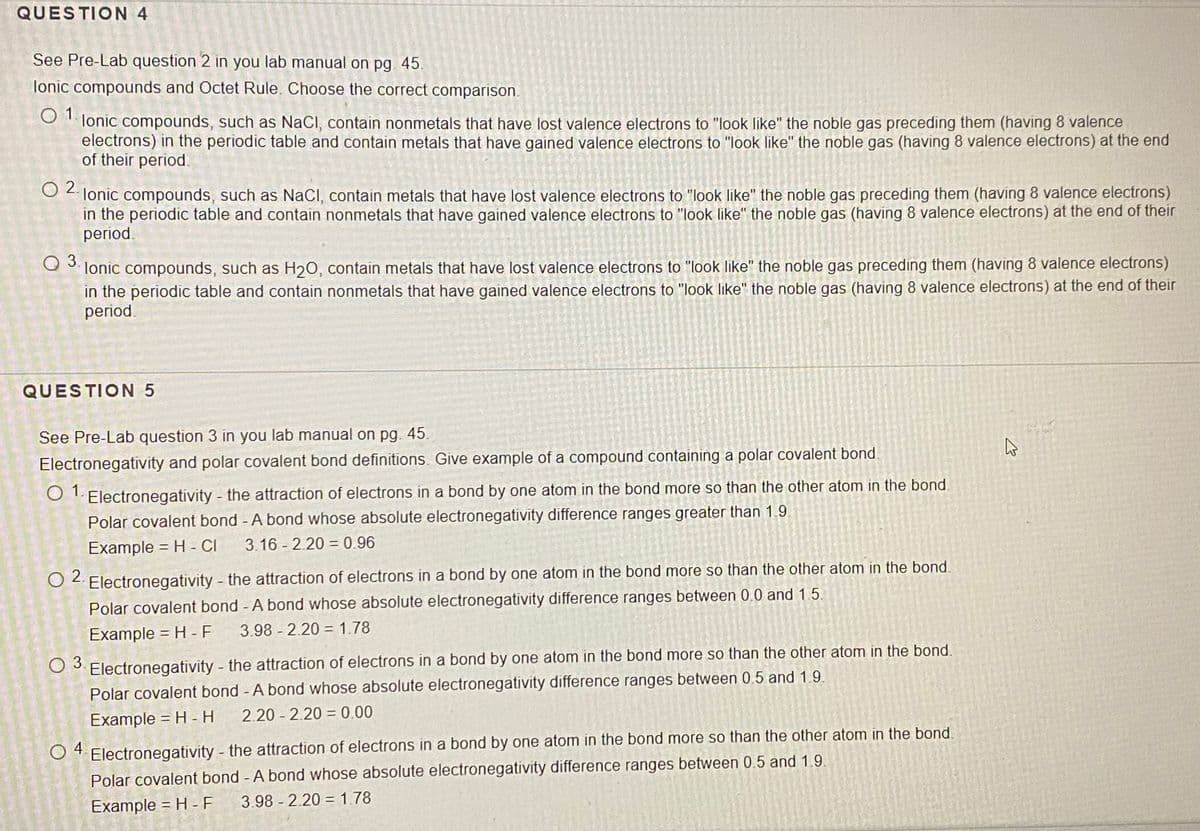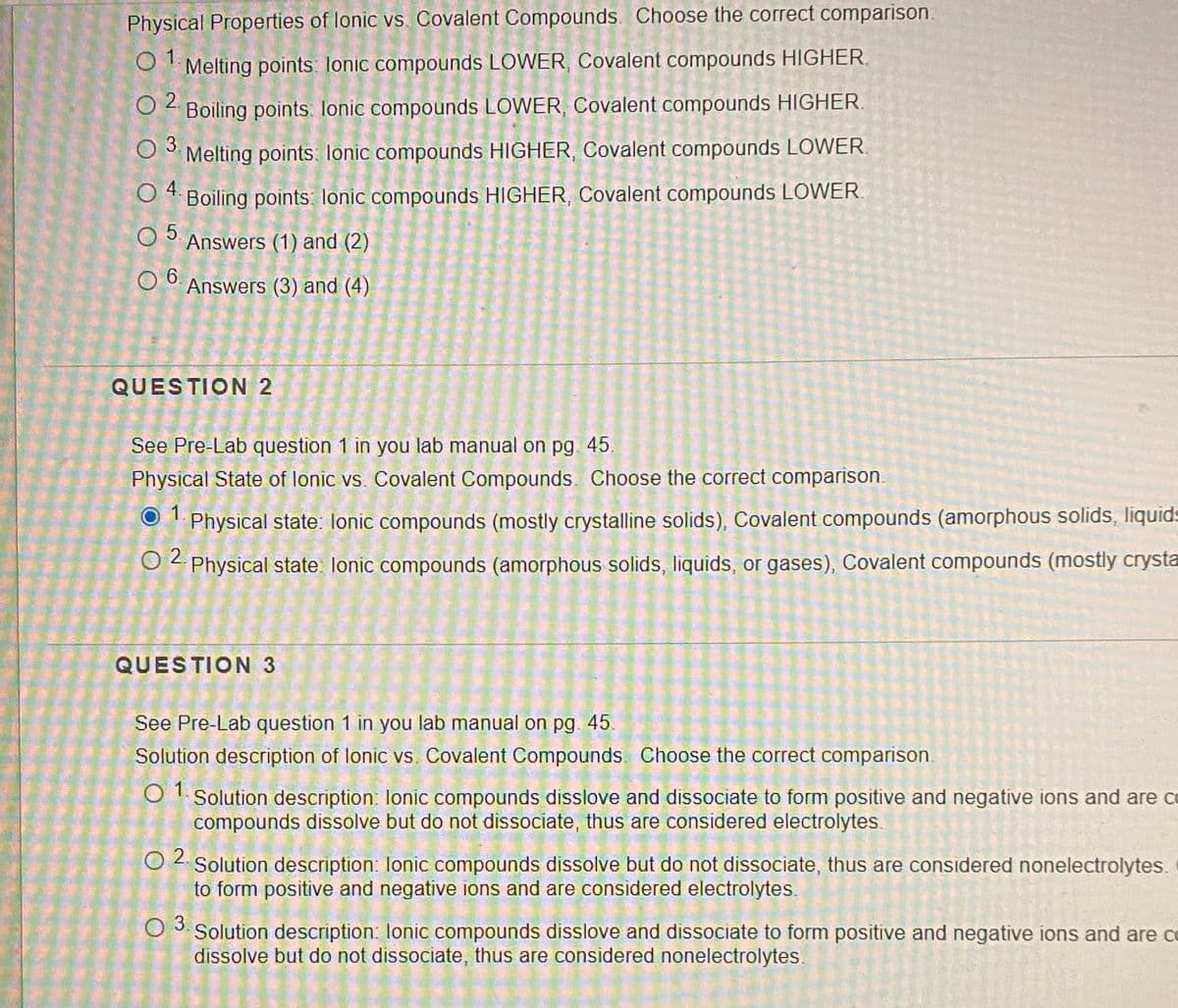e Pre-Lab question 2 in you lab manual on pg 45. nic compounds and Octet Rule. Choose the correct comparison. lonic compounds, such as NaCl, contain nonmetals that have lost valence electrons to "look like" the noble gas preceding them (having 8 valence electrons) in the periodic table and contain metals that have gained valence electrons to "look like" the noble gas (having 8 valence electrons) at the end of their period. 2- lonic compounds, such as NaCl, contain metals that have lost valence electrons to "look like" the noble gas preceding them (having 8 valence electrons) in the periodic table and contain nonmetals that have gained valence electrons to "look like" the noble gas (having 8 valence electrons) at the end of their period D 3. lonic compounds, such as H20, contain metals that have lost valence electrons to "look like" the noble gas preceding them (having 8 valence electrons) in the periodic table and contain nonmetals that have gained valence electrons to "look like" the noble gas (having 8 valence electrons) at the end of their period.
Types of Chemical Bonds
The attractive force which has the ability of holding various constituent elements like atoms, ions, molecules, etc. together in different chemical species is termed as a chemical bond. Chemical compounds are dependent on the strength of chemical bonds between its constituents. Stronger the chemical bond, more will be the stability in the chemical compounds. Hence, it can be said that bonding defines the stability of chemical compounds.
Polarizability In Organic Chemistry
Polarizability refers to the ability of an atom/molecule to distort the electron cloud of neighboring species towards itself and the process of distortion of electron cloud is known as polarization.
Coordinate Covalent Bonds
A coordinate covalent bond is also known as a dative bond, which is a type of covalent bond. It is formed between two atoms, where the two electrons required to form the bond come from the same atom resulting in a semi-polar bond. The study of coordinate covalent bond or dative bond is important to know about the special type of bonding that leads to different properties. Since covalent compounds are non-polar whereas coordinate bonds results always in polar compounds due to charge separation.


Trending now
This is a popular solution!
Step by step
Solved in 2 steps









